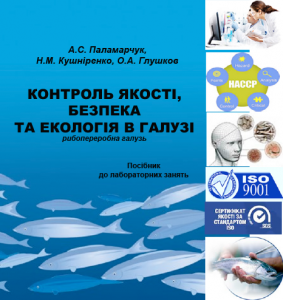|
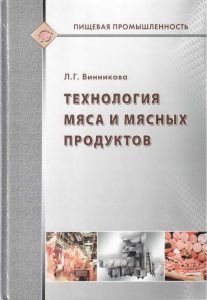
|
Винникова Л. Г. Технология мяса и мясных продуктов. Учебник. – Киев: Фирма «ИНКОС», 2006. – 600 с.
|
It is approved by the Ministry of Education and Science of Ukraine as a textbook for students of the specialty “Technology of storage, conservation, and processing of meat” of higher educational institutions.
The technological processes of processing livestock, poultry, and rabbits are considered. The characteristics of the composition and properties of meat, including organoleptic and functional-technological, as well as methods for their regulation, are given. The scientific foundations of the methods of preserving meat are presented – refrigeration and heat treatment, salting, smoking, drying, the use of canning.
|
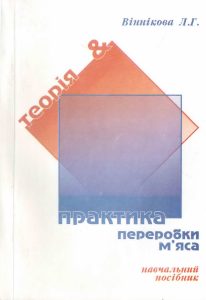
|
Віннікова Л. Г. Теорія і практика переробки мяса. Навчальний посібник. – Ізмаїл: СМИЛ, 2000. – 172 с.
|
Recommended by the Ministry of Education and Science of Ukraine for specialists of meat processing enterprises, university students, and technical schools and graduate students of technical universities of Ukraine.
The information on the technological properties of the production of sausages, pork, beef, and lamb, semi-finished products. The functional properties of raw materials and materials, the biochemical and physicochemical nature of each technological operation, and practical recommendations for its implementation are considered. Methods of regulating the quality of finished products are described.
|
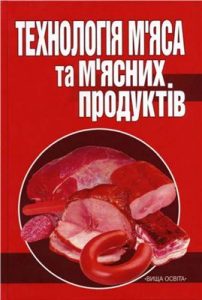
|
Клименко М. М., Віннікова Л. Г., Береза І. Г. Технологія мяса та мясних продуктів: Підручник. – К.: Вища освіта, 2006 – 640 с.
|
Approved by the Ministry of Education and Science of Ukraine as a textbook for students of specialties “Technology of storage, conservation, and processing of meat”, “Production of meat products” of higher educational institutions.
The characteristics of the main species and breeds of slaughtered animals and rabbits are given. The chemical composition, technological and biological properties of meat, and slaughter products are given. The assortment of slaughter and primary processing technology for cattle, pigs, poultry, and rabbits is described; processing slaughter products and eggs; manufacturing of sausages, semi-finished products, and canned meat; production of feed and technical products from raw meat.
|

|
Гарбуз В. Г., Агунова Л. В., Шлапак Г. В. Лабораторний практикум з технології м’яса для студентів спеціальності 7.091707 «Технологія зберігання, консервування та переробки мяса» / Під загальною редакцією д-ра техн. наук, професора Віннікової Л. Г., 2010 – 285 с.
|
Recommended by the Ministry of Education and Science of Ukraine as a textbook for students of higher educational institutions.
|
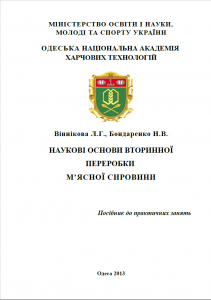
|
Віннікова Л. Г., Бондаренко Н. В. Наукові основи вторинної переробки м’ясної сировини: Посібник до практичних занять. – Одеська національна академія харчових технологій, 2014. – 314 с.
|
The manual for practical classes is intended for students in the direction of training 6.051701 “Food Technology and Engineering” educational qualification level “bachelor” full-time and part-time education to gain sustainable skills in solving practical problems, which is achieved in the process of active independent work on the training material. practical and laboratory classes, as well as when doing homework and term papers on the course: “Scientific basis of secondary processing of raw meat.”
|
|
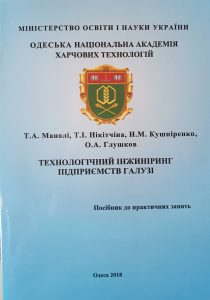
|
Манолі Т.А., Нікітчіна Т.І., Кушніренко Н.М., Глушков О. А. Технологічний інжиніринг підприємств галузі: Посібник до практичних занять. Одеська національна академія харчових технологій, 2018. – 102 с.
|
The manual for practical exercises is intended for students of the field of knowledge 18 “Production and technology”, specialty 181 “Food technology”, master’s degree in all forms of training.
The acquisition of sustainable skills in solving practical problems is achieved in the process of active independent work on educational material in preparation for practical and laboratory classes, as well as in homework and coursework on the course “Technological Engineering of the Industry of the Industry”.
The tool for introducing promising new technologies in the design of fish processing enterprises is engineering, which provides an integrated approach to the implementation of investment projects in the food industry due to the design of all systems as a whole.
Engineering allows introducing innovative technologies into industrial and extractive industries that can solve the main tasks of the development of the modern national economy: increasing labor productivity, reducing material and energy costs, minimizing the impact of production on ecosystems, and the like. Particularly important is the solution to these problems when creating fish processing enterprises in Ukraine, as a sea power.
|
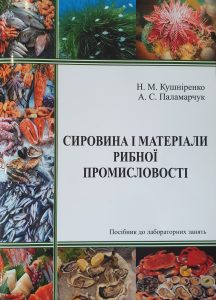
|
Кушніренко Н.М., Паламарчук А.С. Сировина і матеріали рибної промисловості: Навчальний посібник до лабораторних занять. Одеська національна академія харчових технологій, 2019. – 59 с.
|
The textbook for laboratory studies is intended for students of the field of knowledge 18 “Production and Technology”, specialty 181 “Food Technology”, a bachelor’s degree in all forms of training.
The introduction of in-depth knowledge about the ichthyological and techno chemical properties of raw materials of water origin, the acquisition of self-orientation skills in choosing raw materials for the production of a particular type of product, given its qualitative and quantitative indicators, a combination of theory and practice is achieved in the process of active independent work on educational material in preparation to laboratory classes, as well as when doing homework on the course “Raw materials of the fishing industry.”
Expanding the assortment and changing the species composition of raw materials supplied to fish processing enterprises, improving the technologies for its complex processing, as well as obtaining new scientific information about the biochemical processes occurring in raw materials, requires technologists to have deep knowledge of the chemical composition, biochemical processes and technological properties of raw materials of water origin.
|

|
Віннікова Л.Г., Поварова Н.М., Синиця О.В. Основи птахівництва та переробки птиці, – К.: “Освіта України”, 2020. – 216 с.
|
The book presents all stages of poultry processing: from breeding, transportation and primary processing to the production of finished products. Scientific substantiations and practical recommendations for carrying out all stages of production processes are given, and also modern achievements of science and technology are reflected. Particular attention is paid to the formation of quality and safety of poultry products, taking into account consumer demands and producer requirements. The book is intended for students and professionals in the poultry industry.
|

